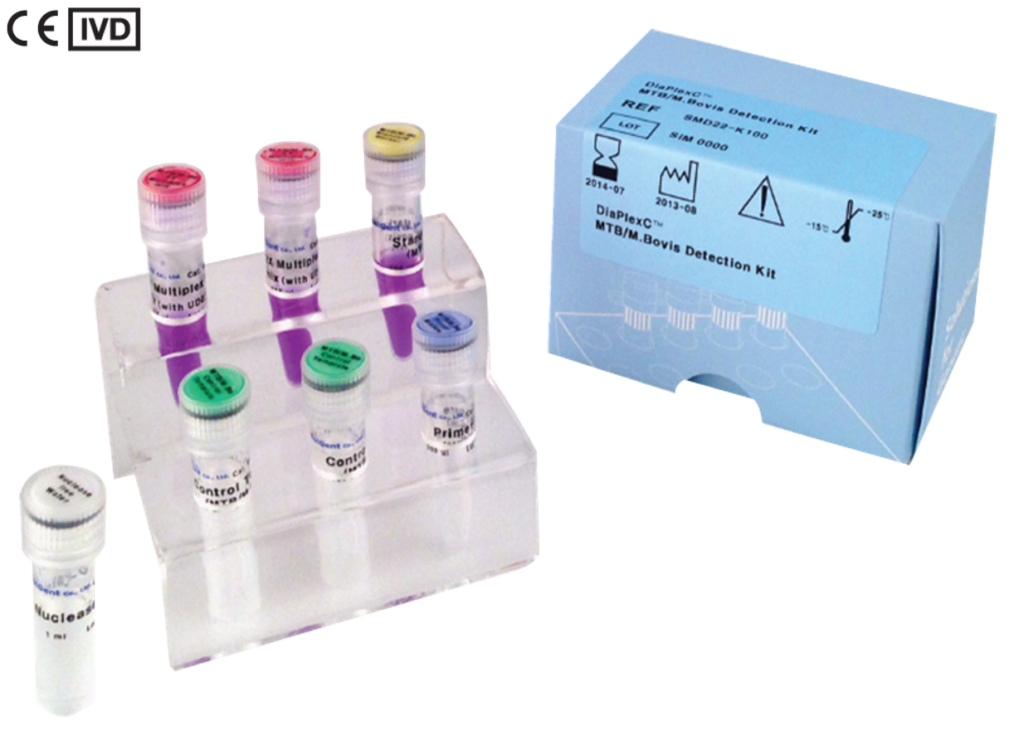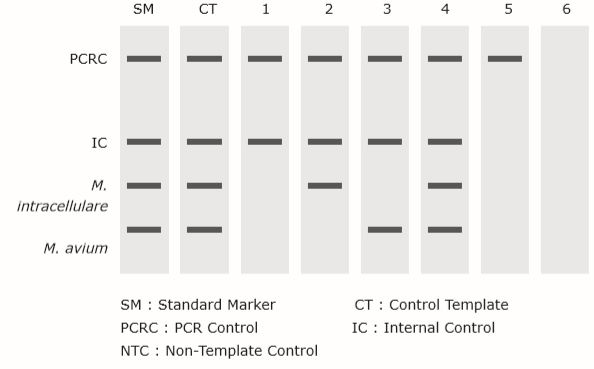
DiaPlexC™ M.Avium/M.Intracellulare Detection Kit
Multiplex PCR based assay system for simultaneous detection of M. avium and M. intracellulare among NTM complex
Specification
| DiaPlexC™ M.Avium/M.Intracellulare Detection Kit |
|
|---|---|
| Detection target | Mycobacterium avium , Mycobacterium intracellulare |
| Registration | CE-IVD |
| Detection technology | Conventional (End-point) Multiplex PCR |
| Specimen type | Sputum, Bronchial lavage, Lung biopsy, Gastric lavage, Urine, Body fluid, Blood, Tissue, Pus, Stool |
| Analytical sensitivity | 10³ copies |
| Compatible instruments* | ABI Veriti thermal Cycler (Applied Biosystems) recommended |
| PCR running time | ~ 2 hrs |
Features
– HotStart PCR system : ultra high specific & sensitive result
– DnaFree™ system : No host genomic DNA contamination
– UDG system : No carryover contamination
– Multiplex PCR system : Multiple targets in a single reaction
– Reliable system : Automatic PCR control
– Positive control included
– Easy-to-use master mix
– CE certification
Experimental

| Lane | Interpretation (detection) |
|---|---|
| 1 | Negative |
| 2 | M. intracellulare |
| 3 | M. avium |
| 4 | M. intracellulare , M. avium (Co-infection) |
| 5 | NTC |
| 6 | Required re-experiment |
Citation&Papers
The NTM handbook:
A Guide for Patients with Non-Tuberculous Mycobacterial Infections Including MAC.
Horsburgh CR Jr. Epidemiology of Mycobacterium avium complex.
In: Korvick JA, Benson CA, eds. Mycobacterium Avium Complex Infection: Progress in Research and Treatment. New York, NY: Marcel Dekker; 1996:1-22.
Tortoli E. Impact of genotypic studies on mycobacterial taxonomy: the new mycobacteria of the 1990s.
Clin Microbiol Rev. 2003; 16:319-354.
Griffith, David, E.; Aksamit Timothy; & A. Brown-Elliott, Barbara et al. (2007).
American Thoracic Society Guidelines: Diagnosis, Treatment and Prevention of Non-tuberculous Mycobacterial Diseases. AM. J. Respiratory and Critical Care Medicine, Vol. 175, pp. 367-417.
Grange, J.M. (2007). “Environmental mycobacterial”. In Greenwood, David; Slack, Richard; peitherer, John; & Barer, Mike (Eds.),
Medical Microbiology (17th Ed.), pp. 221-227. Elsevier. ISBN 978-0-443-10209-7. Evans AJ, Crisp AJ, Hubbard RB, Colville A, Evans SA, Johnston IDA. Pulmonary Mycobacterium kansasii infection: comparision of radiological appearances with pulmonary tuberculosis. Thorax. 1996;51:1243-1247.
Ordering information
| Technology | Cat. No. | Product | Contents |
|---|---|---|---|
| Conventional (End-point) PCR | SMD23-K020 (20 reaction) | DiaPlexC ™ M.Avium/M.Intracellulare Detection Kit | 2X Multiplex PCR Smart mix (with UDG) (M.Av/M.Int) Primer Mixture (M.Avium/M.Intra) Standard Marker (M.Avium/M.Intra) Control Template (M.Avium/M.Intra) Nuclease free Water |
| SMD23-K100 (100 reaction) |



